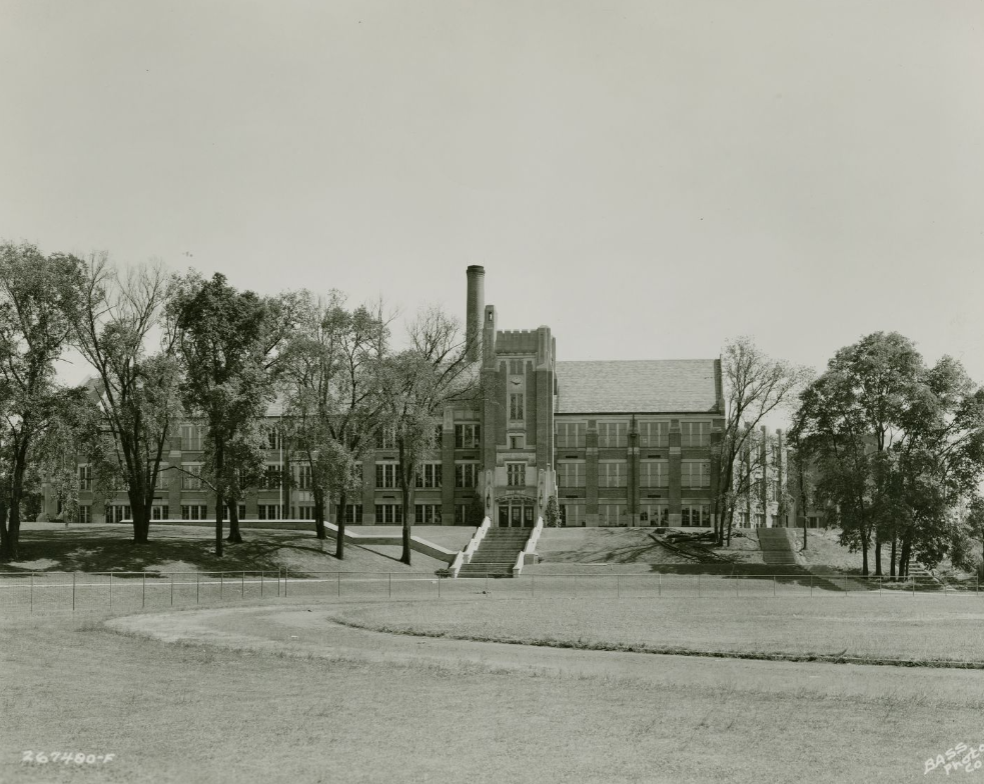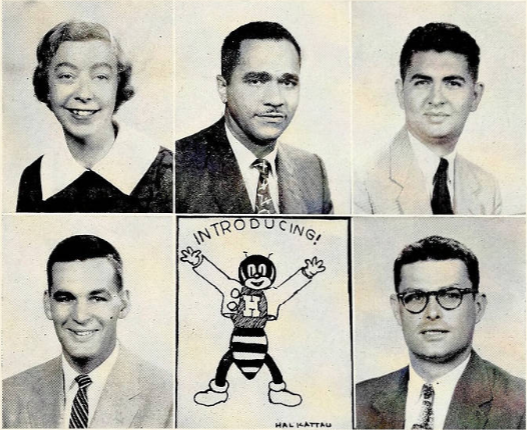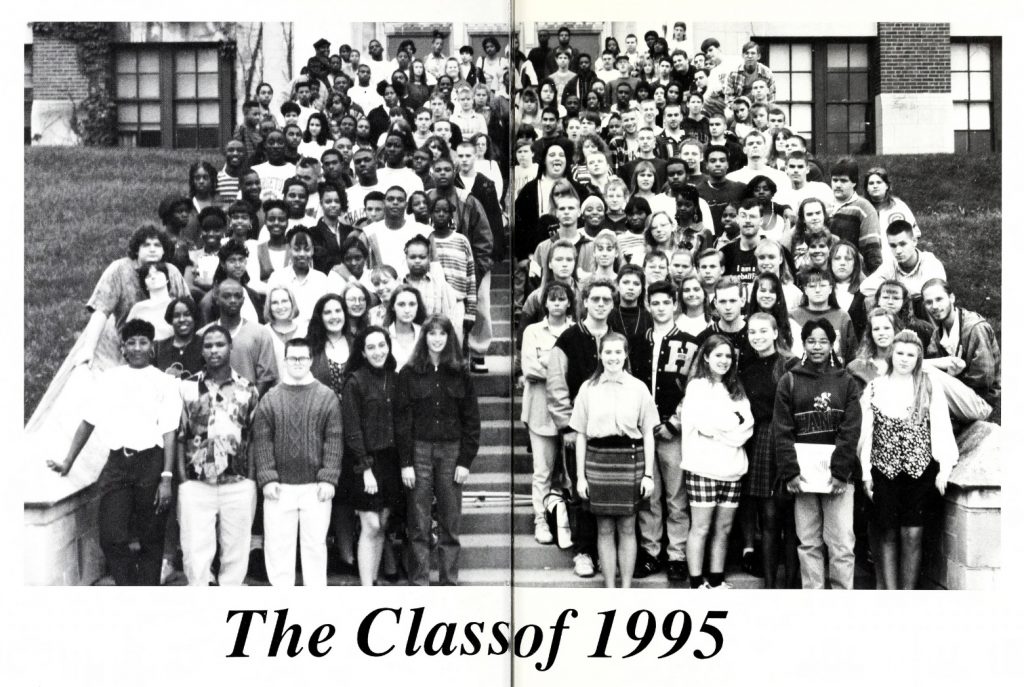Thomas Carr Howe High School opened in the fall of 1938, marking the culmination of years of struggle by the town of and eastside citizens to secure a secondary school.
Before Indianapolis annexed Irvington in 1902, the town had a schoolhouse for elementary and high school students. After annexation, the (IPS) system took control of the Irvington elementary school, designating it IPS No. 57. Though the city promised a high school to serve the area, the school board made no provision for one. Prior to 1927, all of Irvington’s high school students were forced to travel to the southside’s , the centrally located , or, later on, the near northside’s . After 1927, Indianapolis’s Black high school pupils were restricted to attendance at the newly constructed , a segregated, entirely African American institution. Residents of Irvington and other eastside citizens appealed to the IPS board to build an eastside high school. They petitioned for two years before the school board acquiesced. In 1928, the board purchased an 11-acre tract, known as Violet Hill, west of Emerson Avenue and south of Washington Street. The architectural firm completed its design for the new Irvington High School on April 1, 1929. The firm designed a Collegiate Tudor Gothic – style school building of reddish-brown brick and Indiana limestone, containing leaded glass windows and a central tower with a great clock cut in stone.

However, the onset of the and limited funds delayed construction of what was to be called Irvington High School from 1929 until 1937. The federal Public Works Administration issued a $202,500 grant to offset the $450,000 construction bill. By the time construction started in May 1937, the school’s name had been changed to Thomas Carr Howe High School to memorialize the late former president of (see ).
Charles McKay Sharp became Howe’s first principal. He and his staff of 16 teachers welcomed 450 freshmen to Howe on September 6, 1938. Howe quickly established athletics programs for its student body. Men’s programs included cross country, track and field, basketball, golf, and softball. Howe’s football team was organized in the fall of 1943, but it took more than twenty years before the school built Howe Stadium, allowing for home football games to be played at the school. Women’s athletic programs included softball, archery, table tennis, volleyball, and basketball. Student extracurricular organizations also flourished at Howe. These included the Spanish, German, Science, Latin, Photography, Literary, Audio-Visual, and Journalism clubs, as well as the Footlight Revelers (drama club) and Commercial Forum (business club). Organizations such as the Air Raid Wardens’ Club and the Knitting Club became popular outlets for students to contribute to home front efforts. Howe’s inaugural freshman class took part in the school’s first commencement exercise on June 6, 1941.

In 1955, Howe hired its first Black teacher, former World War II Tuskegee Airman Charles H. DeBow, to join the English department. Notable alumni include Nancy Ostrander (1943), former member of the U.S. Foreign Service and ambassador to Suriname; Greg O’Haver (1963), chief instrumentalist and a lead singer with the New Christy Minstrels; and C.W. Mundy (1964), artist.
Maguire and Shook, the building’s original designer, assisted with two campus expansions, coming in 1940 and 1954. The school added a gymnasium, cafeteria, and music room in 1940. Almost fifteen years later, in 1954, the school built a wing to house 25 classrooms, a drafting and mechanical drawing laboratory and mechanical shops, a band practice room, and a basement firing range for the Reserve Officer Training Corps (ROTC) program.
Another expansion in 1963 added science labs, more classrooms, a new cafeteria and a new four-story, 1,200-seat auditorium. On November 9, 1963, Howe marked its 25th anniversary with a musical performance in the new auditorium. In the early 1970s, Howe’s enrollment reached 2,500 students, almost double its student numbers at the time of the first expansion in 1940. Anticipating continued growth, the school board approved plans to add a new gymnasium, media center, offices, and an auto shop.
However, the entire IPS system experienced dwindling enrollment in the 1980s. The decline in enrollment has been attributed to a reduction in birth rate, the implementation of actions in 1981, and the steady drop in population within the IPS boundaries from 1980 to 1990. These trends affected Irvington and the rest of the eastside in parallel with the loss of commercial and industrial businesses, all of which worked to depopulate the area and the high school serving the community. The IPS board voted to close Howe High School at the end of the 1994–1995 school year. June 1, 1995, marked the last graduation at Howe.

Five years later, Howe reopened, now under the name Thomas Carr Howe Community High School, in order to serve students in grades 7 through 12. The high school closed again in 2020. As part of IPS’s Rebuilding Stronger initiative, which prioritized school choice across the district, the school reopened in the fall of 2024 as Thomas Carr Howe Middle School: An International Baccalaureate World School, now serving students in grades 6 through 8.
Over the decades of the school’s existence and through multiple closures and restarts, the building itself has remained an important community landmark, providing a tangible reminder of the fight by Irvington and other eastside residents to obtain a high school for area youth.
FURTHER READING
- The author adapted this EOI entry from their original article
- Barnett, Steven R. “Thomas Carr Howe High School.” The Weekly View, February 22, 2024. https://weeklyview.net/2024/02/22/thomas-carr-howe-high-school/.
- Digital Indy. “Thomas Carr Howe High School Collection.” https://www.digitalindy.org/digital/collection/tchhs.
CITE THIS ENTRY
APA:
Barnett, Steve. (2025). Thomas Carr Howe High School. Encyclopedia of Indianapolis. Retrieved Jan 5, 2026, from https://indyencyclopedia.org/thomas-carr-howe-high-school/.
MLA:
Barnett, Steve. “Thomas Carr Howe High School.” Encyclopedia of Indianapolis, 2025, https://indyencyclopedia.org/thomas-carr-howe-high-school/. Accessed 5 Jan 2026.
Chicago:
Barnett, Steve. “Thomas Carr Howe High School.” Encyclopedia of Indianapolis, 2025. Accessed Jan 5, 2026. https://indyencyclopedia.org/thomas-carr-howe-high-school/.

Help improve this entry
Contribute information, offer corrections, suggest images.
You can also recommend new entries related to this topic.